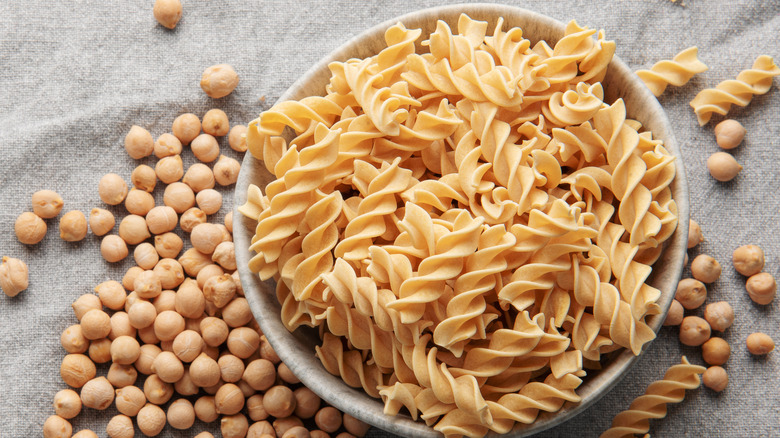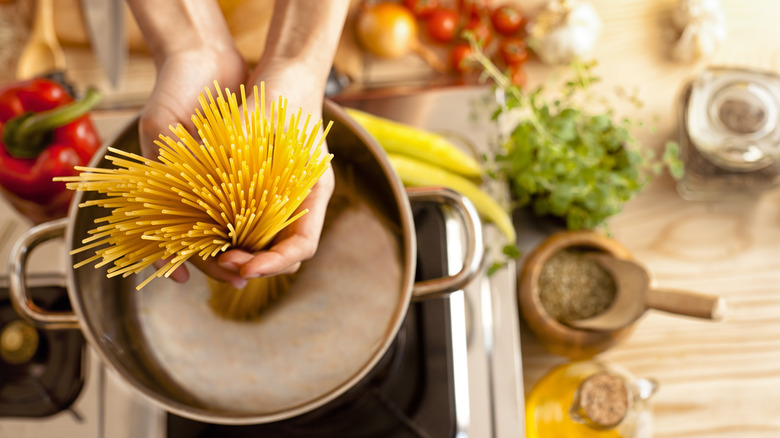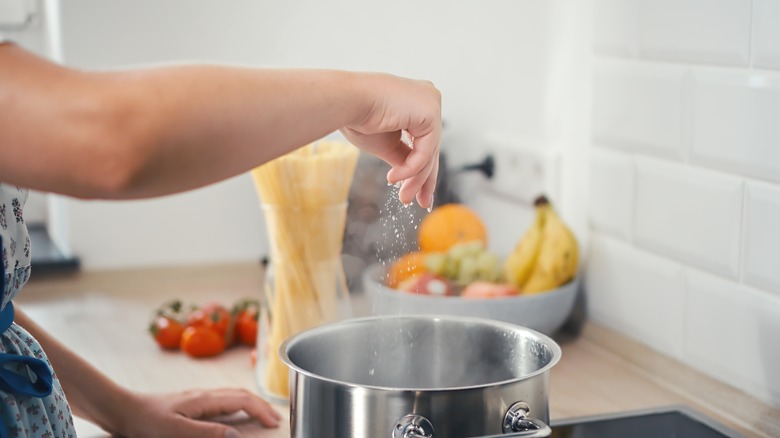The Simple Way To Make Gluten-Free Pasta Taste Way Better
Gluten-free pasta is a hero, giving those with celiac disease, gluten intolerances, or even those who prefer it, a way to enjoy pasta's beauty. However, the texture of cooked wheat pasta is incomparable — chewy and fresh, yet slightly soft. There are several reasons it's so difficult for gluten-free pasta to mirror that truly remarkable consistency, but one simple trick you may not yet have considered lies in the cooking time.
Among the pasta rules you should never break is this gem: do not treat all pasta the same. This applies to gluten-free pasta as it does to any other. Gluten-free pasta is usually made from maize, rice, and pseudo-cereal (grain) flour, but you may even have spotted gluten-free pasta made from chickpeas too. These all have a very different composition from durum wheat, and while that may not directly impact their flavor, it can affect how well the noodles hold together — and this does affect taste. To ensure your gluten-free pasta doesn't fall apart once the timed instructions are hit, then slightly undercook the noodles, and you'll see the texture is way better, and that makes for better flavor too.
It's all about timing
Regardless of whether you use one of the best gluten-free pasta brands, there always seems to be this moment when, after following packet instructions diligently, you're left with mushy overcooked noodles. Each time you wonder what went wrong. Now try this: Instead of following the cooking instructions on the packet, cook the gluten-free pasta (of any brand) for two minutes less than is specified. Cooking gluten-free pasta is about tasting when it's ready instead of timing it.
The pasta wants to have that perfect al dente bite. If it's seriously al dente (crunchy), then yes, you will need to cook it longer, but keep tasting it frequently to ensure you don't miss that gap between just right and gummy mess. After draining your pasta, toss the pasta in olive oil to prevent it from sticking.
You might be wondering why gluten-free pasta reacts by getting so mushy; it's all down to the ingredients. The elasticity and springiness of wheat pasta are largely attributed to gluten, whereas gluten-free pasta lacks this component, making it more prone to losing its shape quickly.
Other gluten-free pasta tips for better flavor
Monitoring your gluten-free pasta is not the only secret to elevating your pasta's consistency. Nothing is worse than pasta sticking together; it doesn't coat as evenly with the sauce and can lead to inconsistently cooked noodles. One trick to avoid this is to stir the pasta every minute or a few minutes consistently. Sticky pasta will only get mushy at the end when you try to break it up. It's also important to note that gluten-free pasta often swells more than regular pasta, so ensure there's extra water when boiling.
Next is salting your pasta water. Salting pasta water is critical with wheat pasta too, but especially crucial with gluten-free. Unless made from chickpeas, gluten-free pasta can have a fairly basic taste. It's better to liven it up with some salt. One method mentioned on the wonderful (and insane) internet suggested even placing cooked gluten-free pasta into an ice bath to reach that bitey texture. If you're making a cold dish (pasta salad), this could work, but otherwise, it's unnecessary.
The next time you cook up some gluten-free pasta, consider experimenting with shorter boiling times and revel in the remarkable texture and flavor of the noodles.


